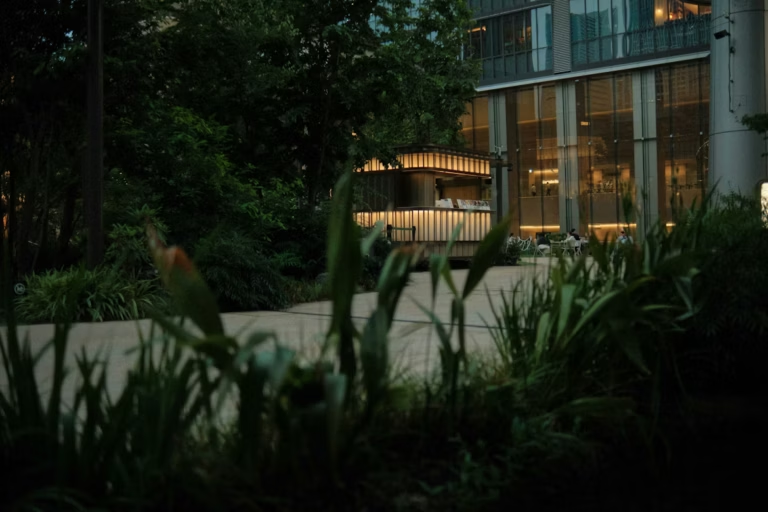Security is often overlooked during the planning and design stages of development projects — until council or a planning authority requests it. More developers, architects and planners in Perth are now required to provide a Security Risk Assessment or CPTED (Crime Prevention Through Environmental Design) report as part of their Development Application (DA).
These reports are designed to ensure new developments contribute to safer, more functional and compliant public environments. When not provided, planning approvals can be delayed or returned with requests for additional information.
This article explains what a security risk assessment for development involves, when it’s required, and how it supports a smooth approval process.
What Is a Security Risk Assessment for Development?
A security risk assessment for development is a structured review of how a proposed site, building or public interface will deter and manage security risks. It considers both design and operational aspects, focusing on issues such as:
- Unauthorised access or trespassing
- Theft, damage or vandalism
- Anti-social behaviour and public safety concerns
- Aggression towards staff, residents or visitors
- Poor lighting or CCTV coverage
- Car park and after-hours safety
- In some cases, vehicle-based threats in high-foot-traffic areas
The assessment aligns with ISO 31000:2018 Risk Management and CPTED principles (ISO 22341) to provide a defensible, standards-based approach.
When Is It Required?
Local councils and planning authorities may request a security risk assessment or CPTED report for:
- Development Application (DA) submissions
- Projects involving public access, mixed-use or multi-residential developments
- Educational, government, commercial or healthcare projects
- Civic spaces, car parks, laneways, community centres and public realm upgrades
- Liquor license applications and hospitality developments
- Prior to issuing a building permit or occupancy certificate
Councils across Perth — such as the City of Perth, Town of Victoria Park, City of Gosnells, City of Stirling and others — often require these documents when a project has implications for community safety, crime risk or public activation.
Who Prepares These Assessments?
These reports are typically prepared by:
- Independent security consultants
- Architects or planning consultants (with specialist security input)
- Developers engaging a consultant to meet council conditions
They are not usually written by guard companies or installers, as councils prefer independent, product-neutral advice.
What’s Included in the Assessment?
Site and Context Review
- Location, surrounding land uses, pedestrian flows, nearby public transport or public spaces
- Potential crime attractors or environmental risks
Threat Identification
- Theft, vandalism, trespassing, break-ins
- Aggression or safety concerns for residents, staff or visitors
- Public interface risks such as loitering, street crime or vehicle movement
Design and CPTED Assessment
- Sightlines and natural surveillance
- Access control for residents, staff, service areas and visitors
- Lighting adequacy and compliance (AS/NZS 1158 where relevant)
- Landscaping, fencing and territorial reinforcement
- Car park design and after-hours security
Security Technology and Operations
- CCTV coverage and recorder capability
- Access control systems, intercoms, secure lift or door control
- Mailrooms, plant rooms and delivery access
- Duress systems, incident reporting and staff procedures
Risk Rating and Treatment Plan
Risks are evaluated using a likelihood and consequence matrix. Recommendations may include:
- Improved CCTV locations or infrastructure integration
- Adjustments to access control or zoning
- Lighting upgrades or removing concealed spaces
- Clear signage, landscaping adjustments or boundary definition
- Security procedures, incident response or contractor access policies
Why Councils Request It
Councils are focused on ensuring developments:
- Provide safe, functional public spaces
- Reduce opportunities for crime and anti-social behaviour
- Support community use without increasing safety risks
- Align with planning frameworks like Safer Places by Design (WA) and ISO 22341
Benefits of Doing It Early
Engaging a security consultant during design — not after — helps:
- Avoid costly redesigns or delays from council RFIs
- Ensure security is integrated, not retrofitted
- Reduce construction-stage conflicts between services (architectural, electrical, security)
- Support grant funding, development approval and insurance obligations
How Smartsec Security Solutions Helps
Smartsec Security Solutions provides independent, assessment-only consulting — we do not sell or install equipment. Our services include:
- Security Risk Assessments for development applications
- CPTED and Safer Design reports for council submissions
- Lighting and after-hours safety assessments
- Public interface, car park and access control advisory
- Risk treatment plans aligned with ISO 31000
- Collaboration with design teams, planners and project managers
Final Thoughts
Security is no longer an optional extra in development design — it is a planning requirement, a public expectation and a key part of delivering a successful built environment. Addressing it early helps projects move through approvals faster, reduces risk and creates safer outcomes for end users.



